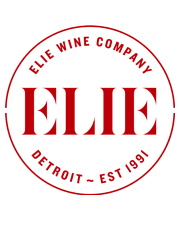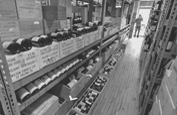The Champagne Society February 2019 Selection: Champagne Jacquesson
Champagne Jacquesson “Cuvée 741” (Extra Brut)
Price for The Champagne Society members: $77 (regular price $90)
Long-time subscribers to The Champagne Society will no doubt be familiar with Champagne Jacquesson’s 700-series created to showcase the character of a particular vintage with the addition of a small amount of reserve wines designed to reinforce the complexity of the base wine.
Indeed, the 700-series is proving to be consistently one of the best non-vintage Champagnes available. We are pleased to share “Cuvée 741” – their latest release based on the 2013 vintage with roughly 20% reserve wine included in the blend.
Although technically a Champagne house, brothers Laurent and Jean-Hervé Chiquet operate Champagne Jacquesson much like a grower operation. Besides their own organic and sustainably farmed 69 acres of vineyard (severely pruned for low yields), they work closely with their neighbors to supplement from an additional 19 acres, all in Grand Cru and Premier Cru vineyards. What sets them apart is their goal of producing a wine that expresses the greatness of their vineyard parcels rather than merely maintain a “house style.” Purely on the refinement of its current cuvées, Jacquesson can easily be ranked among Champagne‘s top six producers.
 Laurent and Jean-Hervé describe their 2013 harvest from the Premiers Crus and Grands Crus villages of Ay, Dizy, Hautvillers, Avize and Oiry: “The winter was very cold and snowy, with spring and early summer staying cold and very damp, causing coulure and millerandage as well as delaying the flowering. However, August and September were warmer and drier giving us a late, but excellent, harvest. The Pinot Noir from Ay and Dizy and the Chardonnays from Avize were particularly successful.”
Laurent and Jean-Hervé describe their 2013 harvest from the Premiers Crus and Grands Crus villages of Ay, Dizy, Hautvillers, Avize and Oiry: “The winter was very cold and snowy, with spring and early summer staying cold and very damp, causing coulure and millerandage as well as delaying the flowering. However, August and September were warmer and drier giving us a late, but excellent, harvest. The Pinot Noir from Ay and Dizy and the Chardonnays from Avize were particularly successful.”
The result is a Champagne with the energy and sap one expects from the 700-series that reflects all the vitality of the vintage. Pure, fresh, elegant, and beautifully layered, the Pinot Noir is especially expressive and gives the wine a textural breadth that belies its youth. The dosage is minimal at 2.5 grams per liter. The wine has nearly a full year of bottle aging after being disgorged in February of 2018.
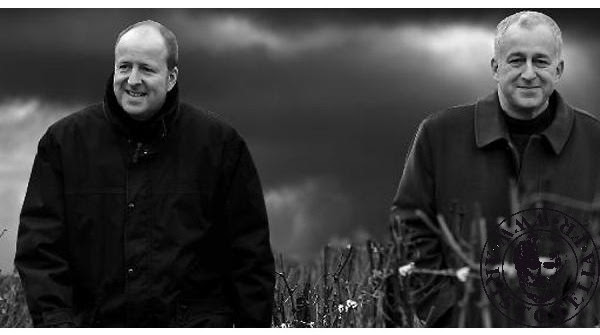
- - -
Posted on 2019.02.01 in France, The Champagne Society, Champagne | Read more...
Pinot Noir Depth & Excellence from One of the Best Kept Secrets in Nuits-Saint-Georges
Domaine Alain Michelot isn’t what you would presently call a famous estate. Perhaps it is because of its small size. Or it could be the fact that the domaine does little to no self-promotion. The truth is that sometimes it is quite difficult to explain why certain winemakers become darlings of the international wine press while others just seem to keep producing great wines in relative obscurity.
The key word here is relative. In his book “Making Sense of Burgundy” published in 1989, Matt Kramer called Domaine Michelot “One of the best estates in Nuits-Saint-Georges.” Kramer goes on to heap praise over the concentration, depth, and exemplary quality of the estate’s wines.
The good news is that Michelot’s quiet excellence benefits us as consumers. While many wines produced in the most revered Premiers Crus of Nuits-Saint-Georges easily fetch upwards of $100 upon release, we are able to sell wines from these prized vineyards for much less.
 Besides solid, traditional winemaking, the appeal of Domaine Michelot is that they hold an extraordinary range of great vineyards, mostly in Nuits-Saint-Georges (roughly 18 acres). They also have a few small plots totaling a little over one acre in Morey-Saint-Denis, and a tiny parcel in the Grand Cru of Clos Vougeot.
Besides solid, traditional winemaking, the appeal of Domaine Michelot is that they hold an extraordinary range of great vineyards, mostly in Nuits-Saint-Georges (roughly 18 acres). They also have a few small plots totaling a little over one acre in Morey-Saint-Denis, and a tiny parcel in the Grand Cru of Clos Vougeot.
The domaine was first realized by Alain’s father in 1920. Alain took over in the mid-60s with the approach of allowing each of the vineyard parcels to express its place. Today it is Alain’s daughter, Elodie, who has methodically brought the domaine’s wines into even higher levels of distinction through lower yields and a slight but carefully considered reduction in the use of new oak barrels.
The 2015 Vintage Wines of Domaine Alain Michelot
Discount prices based on the purchase of a 6-pack(mix-and-match)
![]() ~$44 Morey-Saint-Denis
~$44 Morey-Saint-Denis
A charmer from one of the stronghold villages for quality red Burgundy.
![]()
~$71 “Les Charrières” Morey-Saint-Denis (Premier Cru)
The compact vineyard of Les Charrières lay just north of the village of Morey-Saint-Denis and opposite from the Grand Cru vineyard of Clos de la Roche. The soils are composed of clay and limestone with a fair amount of stones, creating wines of suppleness, depth, and finesse.
![]()
~$58 “Vieilles Vignes” Nuits-Saint-Georges
Old vines from the village of Nuits-Saint-Georges – robust and richly concentrated.
![]()
~$80 “Aux Chaignots” Nuits-Saint-Georges (Premier Cru)
The name Chaignots likely comes from a local dialect for iron-rich minerals. Despite that, the soil is brown-calcerous with quite a bit of clay. The resulting wines are firm and solid, with a good deal of substance and longevity. It is generally considered the biggest wine in the “zone Vosnoise” of Nuits-Saint-Georges: fat, rich, and long-lived.
![]()
~$80 “Les Cailles” Nuits-Saint-Georges (Premier Cru)
Along with Vaucrains this is a runner-up to Les Saint-Georges as the best vineyard in Nuits-Saint-Georges. The soil is described as “tres caillouteux” or “very stony” by the local growers’ association. It’s a complete wine with great density.
![]()
~$89 “Les Vaucrains” Nuits-Saint-Georges (Premier Cru)
One of the richest, most intensely aromatic wines, with concentration to spare. Vaucrains creates some of the most consistently fine wines in the region.
![]()
$189 Clos Vougeot (Grand Cru)
Monumental wine from a half-acre of 40 year-old vines in the Grand Cru of Clos Vougeot.
- - -
Posted on 2019.01.31 in France, Saturday Sips Wines, Burgundy | Read more...
Supple Pinot Noir + Expressive White Wines from the Alsace “Gardens” of Domaine Ostertag
1966 was the year that Irma and Adolphe Ostertag first bottled their estate grown wines. The couple owned a little over seven acres at the time. After further developing his winemaking background in Burgundy, it is André Ostertag, representing the second generation, at the helm today. Although the domaine has expanded to 37 acres over time very little has changed in the approach to viticulture as the family has always tended the vines with the goal to make wines that were expressive of the region.
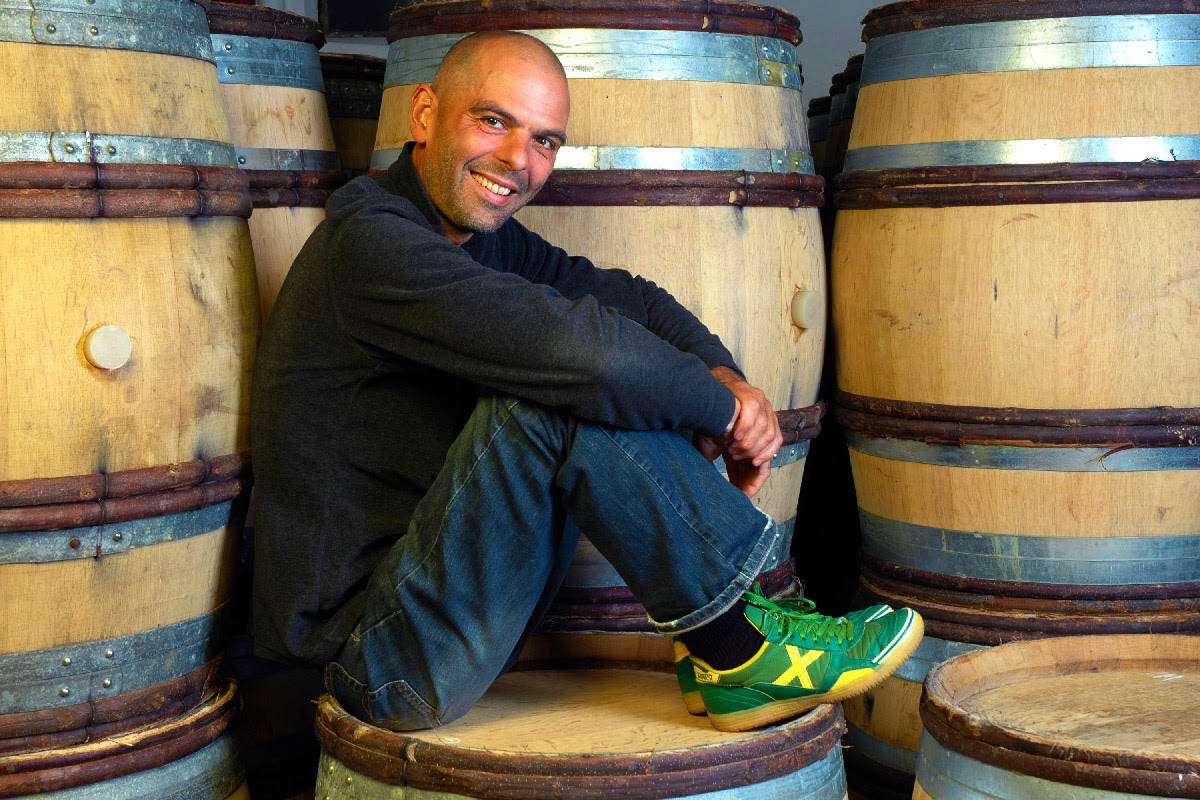 Indeed, André views himself as a gardener and believes there are no general recipes capable of addressing the terroirs of an appellation as diverse as Alsace. His viticultural reality is based entirely on the identity of the 88 different plots across the villages of Epfig (where the domaine is located), Nothalten, Itterswiller, Ribeauvillé, and Albé that constitute the domaine’s holdings. And like many devoted gardeners he believes that while the work is strenuous it is “always driven by a strong sense of aesthetics, harmony, and balance that are inseparable from the notion of Great Wine.”
Indeed, André views himself as a gardener and believes there are no general recipes capable of addressing the terroirs of an appellation as diverse as Alsace. His viticultural reality is based entirely on the identity of the 88 different plots across the villages of Epfig (where the domaine is located), Nothalten, Itterswiller, Ribeauvillé, and Albé that constitute the domaine’s holdings. And like many devoted gardeners he believes that while the work is strenuous it is “always driven by a strong sense of aesthetics, harmony, and balance that are inseparable from the notion of Great Wine.”
For the past two decades he has been cultivating the vines using biodynamic production methods. He does all vineyard work and harvesting by hand and uses no chemical fertilizers, herbicides, pesticides, or fungicides. Indigenous yeasts induce a long fermentation that continues until the wines are fully dry (with the exception of the Gewurztraminer).
While Domaine Ostertag makes some Alsace’s most ambitious wines capable of developing for decades, we are focusing on his series of “The Gardens” wines labeled as “Les Jardins.” These are wines made from fruit that is gathered from parcels of a single grape variety that are located outside of the Lieu-dit or Grand Cru vineyards. If these parcels were isolated, they would makes wines that have a less interesting potential than what they each bring to the whole blend. These blended-parcel wines express the personality of the fruit and the diversity of The Gardens. The wines are aged six to nine months before release and are meant to be consumed within five years of release.
 Domaine Ostertag “Les Jardins” Pinot Noir (Alsace 2016)
Domaine Ostertag “Les Jardins” Pinot Noir (Alsace 2016)
Special Price: $172/6-pack (~$29/bottle)
100% Pinot Noir collected from three Gardens of vines. Each of the parcels are located in Epfig on the crown of the plateau and the vines are planted in two soil types: sandstone as well as clay and sandstone. André is one of a handful of Alsatian growers realizing the potential for Pinot Noir in the region and this is a wine with a vibe all its own. Dry and sunny summers give the wine a fruit density while Alsace’s cooler, continental climate is revealed by a juicy acidity. Bright cherry fruit and herbal, woodsy earth tones shine through a silky coat. It is simultaneously unique and varietally correct. Pair it with the Alsatian version of pizza: Tarte flambée.
“The Gardens” Whites of Domaine Ostertag
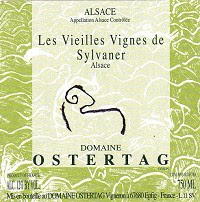 Les Vieilles Vignes de Sylvaner (Alsace 2016)
Les Vieilles Vignes de Sylvaner (Alsace 2016)
Special Price: $135/6-pack (~$22/bottle)
From a total of 10 Gardens in the villages of Epfig and Nothalten with vines an average of 55 years old. The parcels consist of five different soil types: sandstone, clay and sandstone, marl and clay, granite, and alluvium. The deeply established root systems of the vines helps create depth and a surprisingly rich mineral structure for the Sylvaner variety.
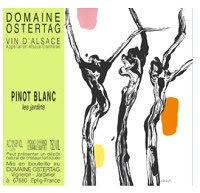
Pinot Blanc “Les Jardins” (Alsace 2016)
Special Price: $135/6-pack (~$22/bottle)
From a total of six Gardens of vines in Epfig, including the Fronholz vineyard. The parcels consist of two different soil types: clay and silt, and marl and sandstone. This is a bone dry Pinot Blanc, with a thirst-quenching salty tang that would pair nicely with mild sashimi.

Riesling “Les Jardins” (Alsace 2016)
Special Price: $151/6-pack (~$25/bottle)
From a total of 13 Gardens of vines in Epfig, Itterswiller, and Nothalten. The parcels consist of three different soil types: sand and sandstone, clay and sandstone, and sandstone and volcanic. A transparent, crystalline wine with plenty of balance to go along with its purity and focus. The medium-bodied citrus and spice character makes it a versatile wine capable of pairing with a vast range of foods up to the fattiest of red meats.
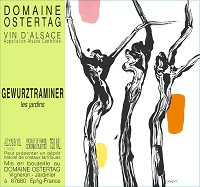
Gewurztraminer “Les Jardins” (Alsace 2016)
Special Price: $194/6-pack (~$32/bottle)
From a total of six Gardens of vines in Epfig. The parcels consist of two different soil types: clay and sandstone, and marl and clay. An opulent and textural wine with a bit of residual sugar to enhance the tropical flavors and aromatics of lychee and rose water. Pair a bottle with spicy Pad Thai.
- - -
Posted on 2019.01.24 in France, Saturday Sips Wines, Alsace | Read more...
The Majestic Mountain Wines of Spain’s Sierra de Gredos
Maldivinas is a partnership between childhood friends Juan Carlos Arenas and Guillermo Fernandez Santos established in 2006 from plots of old vine Garnacha around the town of Cebreros some 50 miles due west of Madrid.  This is traditional winemaking territory, where the stunningly beautiful landscape of the Sierra de Gredos mountain range is recognized for the production of balanced Garnacha-based wines in a landscape that is otherwise scorching and dry but with broad diurnal temperature swings that allow for wines to maintain the acidity to balance all that ripe fruit. To get some idea of the altitude here, Cebreros is just east of the Central Mountain System’s highest peak, the slender Almanzor, towering above the landscape at close to 9,000 feet.
This is traditional winemaking territory, where the stunningly beautiful landscape of the Sierra de Gredos mountain range is recognized for the production of balanced Garnacha-based wines in a landscape that is otherwise scorching and dry but with broad diurnal temperature swings that allow for wines to maintain the acidity to balance all that ripe fruit. To get some idea of the altitude here, Cebreros is just east of the Central Mountain System’s highest peak, the slender Almanzor, towering above the landscape at close to 9,000 feet.
The organically farmed old-vine wines of Maldivinas express a diverse range of the local granitic and schistous terroirs. These are wines that tend toward Burgundian in texture. They are ethereal, full of pure fruit, and a balanced extraction. While Gredos has already received recognition as a unique wine region, it seems only a matter of time that they will be awarded their own appellation.
 Maldivinas “La Movida Granito” (Viño de la Tierra de Castilla y León 2013)
Maldivinas “La Movida Granito” (Viño de la Tierra de Castilla y León 2013)
Special Price: $174/6-pack (~$29/bottle)
Widely planted throughout Spain and much of the Mediterranean the Garnacha grape in the right hands and right place has the ability to express the distinct characteristics of the soil and climate where it grows. The 100% Garnacha “La Movida Granito” is a tribute to the decomposing granite soil from an organically cultivated, 4.5 acre vineyard of 90 year old vines at roughly 2,600 feet elevation. The wine is fermented by native yeasts in one concrete tank, with a percentage of whole clusters to highlight the characteristics of the fruit, and then aged in neutral oak barrels before bottling. Aromatically complex with layers of floral, berry, and spice, a sip is juicy and practically begs another in short measure. For a simple yet classically tasty pairing, serve with a big slice of tortilla de patatas. Only 300 cases produced.
 Maldivinas “Combate” Albillo Real (Viño de la Tierra de Castilla y León 2015)
Maldivinas “Combate” Albillo Real (Viño de la Tierra de Castilla y León 2015)
Special Price: $232/6-pack (~$39/bottle)
Although there is very little Albillo Real left in Spain it is the noble white grape of the Sierra de Gredos mountain range. Floral and full of body it is a variety that gains a lot of density from the hot and sunny days in the Gredos summer. “Combate” Albillo Real is 100% old-vine Albillo Real from high altitude vineyards. Its aromas of ripe yellow orchard fruits lead into cool herbality to finish with a lengthy and lively mineral twist. There are no comparisons to this wine but if we were forced we might say that it’s something like the lovechild of a partnership between Burgundy and the Rhône. Only 100 cases produced.
- - -
Posted on 2019.01.16 in Saturday Sips Wines, Spain DO, Tierra de Leon | Read more...
Coastal Tuscany’s Maremma Expressed Through a Star Winemaker’s Beautifully Mature Red Wine
Ampeleia Cuvée “Ampeleia” (IGT Costa Toscana 2015)
Special Price: $253/6-pack (~$42/bottle)
Many of you are already familiar with Elisabetta Foradori’s biodynamic, Teroldego-based wines of unrivaled quality that shine on the international stage. We have featured these northeastern Italian gems over the past couple of years and have fallen in love with their charm, beauty and intensity.
 It is our pleasure to introduce another exciting project led by Elisabetta further south near the Tuscan coast. Ampeleia was conceived in 2002 as a partnership between Elisabetta Foradori, Thomas Widmann, and Giovanni Podini. It seeks to reveal the diversity and potential of Maremma’s Colline Metallifere, a mineral-rich, mountain-hill group mined since Etruscan times that occupies the central-western part of Tuscany, just west of Montalcino.
It is our pleasure to introduce another exciting project led by Elisabetta further south near the Tuscan coast. Ampeleia was conceived in 2002 as a partnership between Elisabetta Foradori, Thomas Widmann, and Giovanni Podini. It seeks to reveal the diversity and potential of Maremma’s Colline Metallifere, a mineral-rich, mountain-hill group mined since Etruscan times that occupies the central-western part of Tuscany, just west of Montalcino.
Although Ampeleia owns around 320 acres of land, only 86 acres are planted to vine in an effort to promote biodiversity. These 86 acres are spread over three separate areas of differing elevations: The largest and highest unit of the estate, Ampeleia di Sopra, resides between 1,350 and 1,800 feet above sea level. It is mainly planted with Cabernet Franc in a landscape dominated by chestnut groves. The middle unit, Ampeleia di Mezzo, is mainly planted to Sangiovese with some Grenache and Carignan. It is divided into small plots that range from 750 to 1,050 feet above sea level and the vineyards are surrounded by cork oak woods and Mediterranean scrubland. the furthest unit and closest to the sea is Ampeleia di Sotto. At about 600 feet above sea level the vineyards are planted mainly to Grenache. Since 2009, Ampeleia di Sopra has been farmed biodynamically. The two other sites are farmed organically on their way to conversion to biodynamic.
 Showcasing the variability in altitude, soil type and microclimatic conditions of the three areas the cuvée “Ampeleia” is the estate’s top wine. The base of the wine consists of low yields of Cabernet Franc from vines planted in the early 1960s in Ampeleia di Sopra but it has a smattering of other varieties from all three climats. Aging takes place for 12 months in wooden barrels and cement tanks.
Showcasing the variability in altitude, soil type and microclimatic conditions of the three areas the cuvée “Ampeleia” is the estate’s top wine. The base of the wine consists of low yields of Cabernet Franc from vines planted in the early 1960s in Ampeleia di Sopra but it has a smattering of other varieties from all three climats. Aging takes place for 12 months in wooden barrels and cement tanks.
Cuvée “Ampeleia” is among the most pure and transparent expressions of coastal Tuscany available. A grocery cart of heady aromatics include mixed berries, cherry licorice, minty herbs, a touch of chocolate, and a whisper of lavender. A sip is generous with dense fruit that seamlessly merges with a medium-bodied mid-palate and a mineral-rich, lengthy finish. Maremma is known for its large population of wild boar so if you happen to own our favorite Italian cookbook – Marcella Hazan’s Essentials of Classic Italian Cooking – her dish of stewed pork with porcini and juniper would be a special pairing.
- - -
Posted on 2019.01.10 in Saturday Sips Wines, Italy, Tuscany | Read more...
Featured Wines
- Notebook: A’Boudt Town
- Saturday Sips Wines
- Saturday Sips Review Club
- The Champagne Society
- Wine-Aid Packages
Wine Regions
Grape Varieties
Aglianico, Albarino, Albarín Tinto, Albillo, Alicante Bouschet, Aligote, Altesse, Arbanne, Arcos, Auxerrois, Barbarossa, Beaune, Biancu Gentile, Bonarda, bourboulenc, Cabernet Sauvignon, Caladoc, Calvi, Carignan, Chablis, Chenin Blanc, Cinsault, Clairette, Cortese, Corvinone, Cot, Counoise, Dolcetto, Fiano, folle Blanche, Frappato, Fumin, Gamay, Garganega, Garnacha Tintorera, Godello, Graciano, Grenache, Grenache Blanc, Grolleau, Groppello, Jacquère, Juan Garcia, Lladoner Pelut, Macabeo, Maconnais, Malbec, Malvasia, Malvasia Nera, manseng, Marcelan, Marselan, Marzemino, Melon de Bourgogne, Mencía, Merlot, Montepulciano, Montònega, Mourv, Mourvèdre, Muscadelle, Muscat, Natural, Nebbiolo, Nero d'Avola, Niellucciu, Palomino, Patrimonio, Pecorino, Pedro Ximénez, Persan, Pineau d'Aunis, Pinot Auxerrois, Pinot Gris, Pinot Meunier, Pouilly Fuisse, Pouilly Loche, Poulsard, Riesling, Rose, Rousanne, Sagrantino, Sangiovese, Sauvignon, Sciacarellu, Serine, Souson, Sumoll, Tempranillo, Teroldego, Timorasso, Trebbiano Valtenesi, Treixadura, trepat, Trousseau, Ugni Blanc, Vermentino, Viognier, Viura, Xarel-loWines & Events by Date
- September 2025
- August 2025
- July 2025
- June 2025
- May 2025
- April 2025
- March 2025
- February 2025
- January 2025
- December 2024
- November 2024
- October 2024
- September 2024
- August 2024
- July 2024
- June 2024
- May 2024
- April 2024
- March 2024
- February 2024
- January 2024
- December 2023
- November 2023
- October 2023
- September 2023
- August 2023
- July 2023
- June 2023
- May 2023
- April 2023
- March 2023
- February 2023
- January 2023
- December 2022
- November 2022
- October 2022
- September 2022
- August 2022
- July 2022
- June 2022
- May 2022
- April 2022
- March 2022
- February 2022
- January 2022
- December 2021
- November 2021
- October 2021
- September 2021
- August 2021
- July 2021
- June 2021
- May 2021
- April 2021
- March 2021
- February 2021
- January 2021
- December 2020
- November 2020
- October 2020
- September 2020
- August 2020
- July 2020
- June 2020
- May 2020
- April 2020
- March 2020
- February 2020
- January 2020
- December 2019
- November 2019
- October 2019
- September 2019
- August 2019
- July 2019
- June 2019
- May 2019
- April 2019
- March 2019
- February 2019
- January 2019
- December 2018
- November 2018
- October 2018
- September 2018
- August 2018
- July 2018
- June 2018
- May 2018
- April 2018
- March 2018
- February 2018
- January 2018
- December 2017
- November 2017
- October 2017
- September 2017
- August 2017
- July 2017
- June 2017
- May 2017
- April 2017
- March 2017
- February 2017
- January 2017
- December 2016
- November 2016
- October 2016
- September 2016
- August 2016
- July 2016
- June 2016
- May 2016
- April 2016
- March 2016
- February 2016
- January 2016
- December 2015
- November 2015
- October 2015
- September 2015
- August 2015
- July 2015
- June 2015
- May 2015
- April 2015
- March 2015
- February 2015
- January 2015
- December 2014
- November 2014
- October 2014
- September 2014
- August 2014
- July 2014
- June 2014
- April 2014
- March 2014
- February 2014
- January 2014
- December 2013
- November 2013
- October 2013
- September 2013
- August 2013
- July 2013
- June 2013
- May 2013
- April 2013
- March 2013
- February 2013
- January 2013
- December 2012
- November 2012
- October 2012

